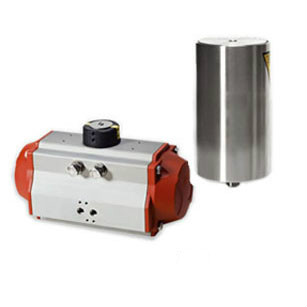The Causes Leading to Damaged Valve Sealing Surface
Mechanical damage:
There will be scratches, bumps, crushes, and other damages during the opening and closing of the sealing surface. Between two sealing surfaces, under high temperature and high pressure, there will be mutual penetration of atoms, resulting in adhesion. When the two sealing surfaces move along each other, they’re prone to be torn apart at the adhesive point. The higher the surface roughness of the sealing surface, the more likely such phenomenon is going to happen. During the closing process of sanitary valve and returning process of valve flap, there’ll be bumps and crush to the sealing surface, leading to partial wear or indentation of the sealing surface.
The erosion from the medium:
It’s the result of wear, rinse, and cavitation to the sealing surface by the medium. At a certain speed, the planktonic particles inside the medium are in contact with the sealing surface, causing partial damage. Medium in high speed directly flushes the sealing surface, causing partial damage. When the mixed flow of medium and partial vaporization happen, impact strikes the sealing surface, causing partial damage. The erosion from the medium, combined with chemical erosion, will strongly erode the sealing surface.
Electrochemical erosion:
The contact between sealing surfaces, the contact between the sealing surface and valve body, the medium concentration difference, and oxygen concentration difference can all lead to potential difference and the occurrence of electrochemical erosion, causing the anode side of the sealing surface to erode.
Chemical erosion from the medium:
The medium near the sealing surface, under the circumstances of no electrical current, directly has a chemical effect on the sealing surface, eroding the sealing surface.
Improper installation and poor maintenance cause the sealing surface to malfunction. With the valve malfunctioning, the sealing surface is prematurely damaged.
Damage caused by improper selection and poor handling:
Valves are not selected according to the working conditions. Shut-off valves are used as throttle, resulting in very quick closing and lax closing, making the sealing surface erode and wear.
Poor quality of processing of sealing surface:
There are cracks, stomata, ballast, and other defects on the sealing surface. These are caused by improper selection and poor handling of welding and heat-treatment processes. If the hardness of the sealing surface is too high or too low, it’s usually because of improper selection or heat treatment. If the hardness of the sealing surface is uneven, and the sealing surface is not corrosion-resistant, it’s usually because the bottom-level metal is blown up to the surface during the welding process, diluting the alloy composition of the sealing surface.
Conclusion
Thank you for reading our article and we hope it can help you better understand the causes leading to damaged valve sealing surface. If you want to learn more about the causes leading to damaged valve sealing surface, we would like to advise you to visit the Adamant Valve homepage for more information.





